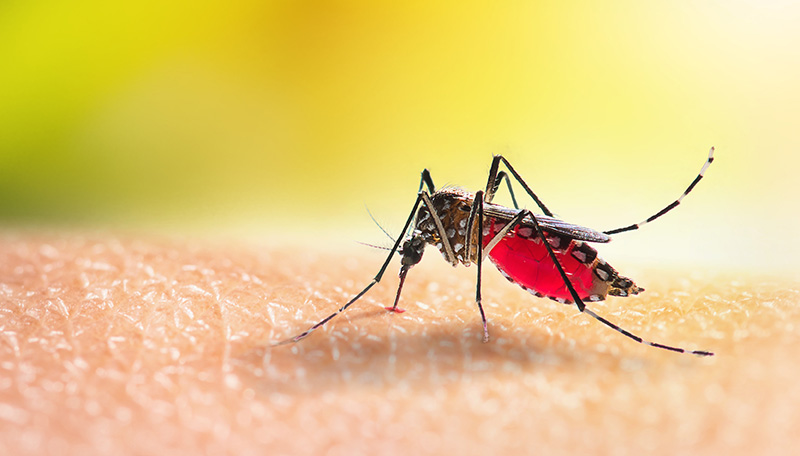A Path Toward Eliminating Relapsing Malaria
 Dec. 4, 2023 – Researchers in Seattle Children’s Research Institute’s Center for Global Infectious Disease Research (CGIDR) and colleagues have identified inhibitors that open a new avenue to eliminate relapsing malaria, the hardest-to-treat form of the disease. Their findings were published in the journal Nature Communications.
Dec. 4, 2023 – Researchers in Seattle Children’s Research Institute’s Center for Global Infectious Disease Research (CGIDR) and colleagues have identified inhibitors that open a new avenue to eliminate relapsing malaria, the hardest-to-treat form of the disease. Their findings were published in the journal Nature Communications.
“We provide evidence that inhibiting a specific malaria protein called N-myristoyltransferase has potential to prevent relapsing malaria,” said Dr. Alexis Kaushansky, a CGIDR principal investigator. Kaushansky and her team closely collaborated with Dr. Bart Staker, a senior research scientist in CGIDR’s Myler Lab, and researchers at Sweden’s University of Gothenburg.
Human malaria is a mosquito-borne disease caused by five species of Plasmodium parasites. In 2021, there were approximately 247 million patients affected by malaria worldwide. Of those, 619,000 people died. Plasmodium vivax is common around the world and causes persistent infections.
Numerous antimalarial drugs exist; however, the emergence, persistence and spread of tolerance and resistance to almost all these drugs mean new drugs are needed. Researchers believe approaches that could target multiple stages of the parasitic life cycle may be the most robust approach toward the goal of malaria eradication.
Most current drugs do not successfully target the dormant liver stage form, called hypnozoites, which are thought to be the source of all relapsing infections. Hypnozoites are commonly observed in P. vivax infections and remain in the liver for weeks, months or even years and later reactivate, leading to relapse and symptomatic blood-stage infection. Between 20% and 100% of clinical presentations of P. vivax in humans result from hypnozoite relapse. Current drugs that target hypnozoites can cause severe toxicity in about 30% patients in P. vivax-prevalent areas.
“Relapsing malaria is a major hurdle to malaria eradication, as most approved drugs are not safe to use in children or in pregnant women, two populations at very high risk for the most severe forms of malaria,” said Kaushansky, who is also an associate professor in the Department of Pediatrics at the University of Washington School of Medicine. “New drugs are desperately needed.”
Targeting N-myristoyltransferase had been previously discounted as a viable strategy. However, the University of Gothenburg collaborators, Drs. Diego Rodriguez-Hernandez and Morten Grotli, made a new series of inhibitors.
The researchers tested the inhibitors in P. vivax-infected blood collected from patients attending malaria clinics in Tak and Yala provinces in Thailand. They found the compounds overcame previous limitations and showed minimal toxicity in human cells. The inhibitors targeted both the schizont (developing) and hypnozoite (dormant) forms of infection, providing a potential path forward for the development of this type of anti-malarial treatment.
“This is really critical, as eliminating dormant forms of the parasite has been incredibly challenging with existing tools,” Kaushansky said.
In future work, the Kaushansky team wants to make the compounds better binders for their target and test them in more human-relevant systems.
“We hope to continue to work with our collaborators, who are incredible chemists and will synthesize new molecules to target these proteins in selective and unique ways,” Kaushansky said. “We then plan to test these molecules for their ability to prevent relapsing infection and evaluate their possible toxicity in multiple model systems before evaluating the potential to advance the molecules to clinical studies.”
Seattle Children’s contributing authors include Dr. Peter Myler, Rachael Zigweid and Michael Fenwick of the Myler Lab; and Elizabeth Glennon of the Kaushansky Lab. Dr. Kamalakannan Vijayan, formerly of the Kaushansky Lab and now at the Indian Institute of Science Education and Research, also contributed and remains a collaborator.
The research was funded by the National Institute of Allergy and Infectious Diseases, National Institutes of Health, a fellowship from Coordination for the Improvement of Higher Education (CAPES), the Swedish Research Council and the University of Gothenburg.
— Colleen Steelquist
